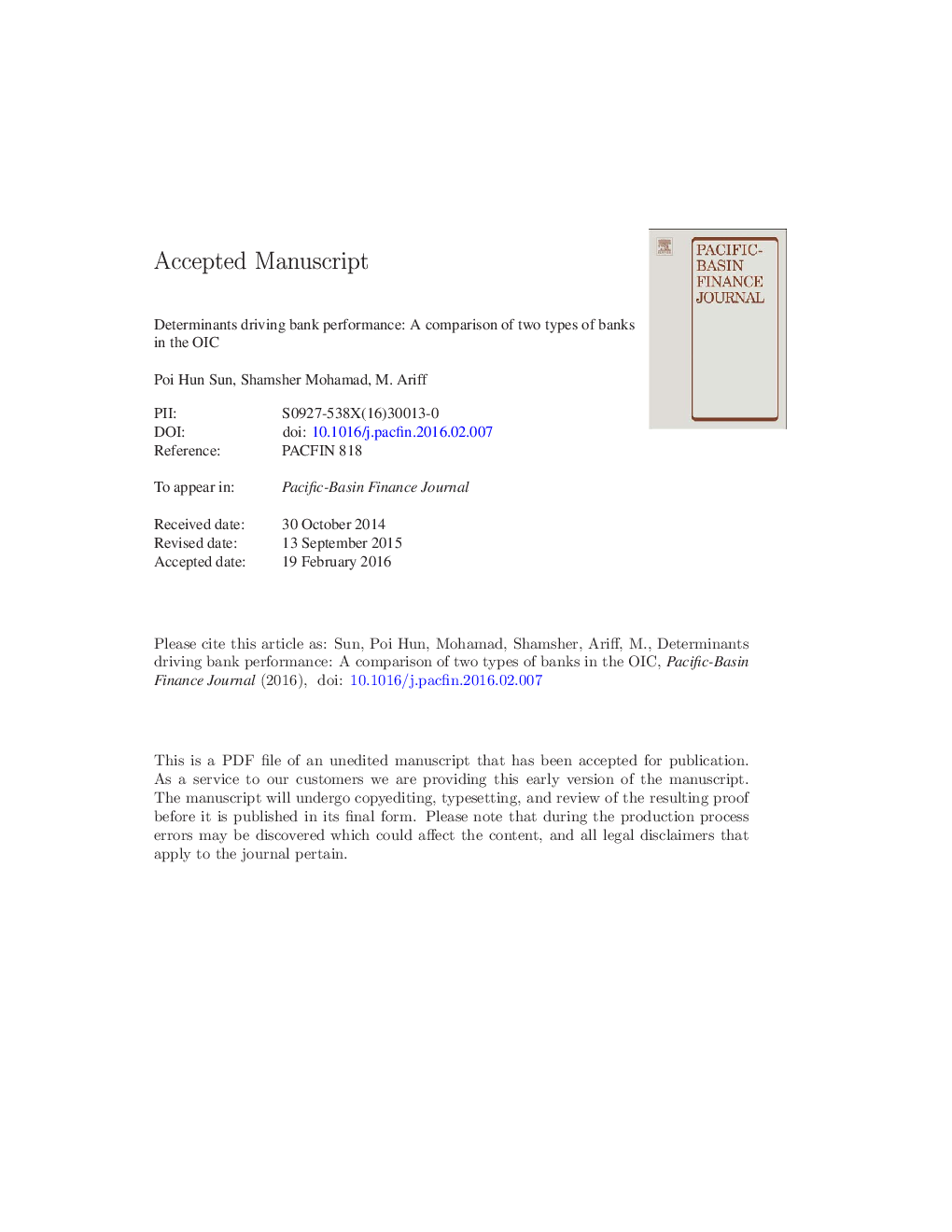| Article ID | Journal | Published Year | Pages | File Type |
|---|---|---|---|---|
| 5102343 | Pacific-Basin Finance Journal | 2017 | 37 Pages |
Abstract
This paper extracts key variables from documented findings on bank intermediation margins of two types of banks in the Organisation of Islamic Countries. The intermediation margins used as the dependent variable are: net interest margins of conventional banks and the net profit margins of Islamic banks. To overcome the endogeneity issue of variables, an appropriate econometric procedure namely the dynamic Generalized Method of Moments is applied using data from 105 commercial banks over 14Â years. The results are interesting: there is a significant difference in the margins across the two types of banks, 2.17% and 1.61% respectively. Capital adequacy, management quality, and diversification determinants significantly explain the margins of both types of banks. We also find evidence suggesting market quality matters. This is an expected result since both banks operate, despite their inherent institutional differences, in a competitive environment to meet the core demands for funds, which are the same, for traditional lending and borrowing activities. However, this also shows that both CBs and IBs in dual banking system are not significantly different from each other, despite the perception arising from minor institutional differences. These findings provide insights on the unique banking performance in dual banking systems.
Related Topics
Social Sciences and Humanities
Economics, Econometrics and Finance
Economics and Econometrics
Authors
Poi Hun Sun, Shamsher Mohamad, M. Ariff,
